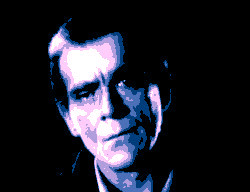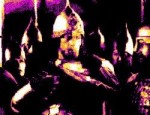Film Review

A sly reworking of Mary Shelley's famous Gothic novel, The Walking Dead sneakily works in several references to James Whale's Frankenstein (1931) - not only does Karloff get to play a similar kind of unjustly fated monster, the laboratory equipment that brings him to life is eerily reminiscent of that seen in Whale's film, complete with dramatic electric arcs and eerie buzzing sounds. Not only that, the Dr Frankenstein character (here named Dr Beaumont) gets to deliver the line "He's alive" when Karloff is revitalised, albeit in a far more subdued manner than Colin Clive's over-the-top utterance of "It's alive!" in the original Frankenstein film. The most obvious similarity is that Karloff's character is less a murdering fiend and more an innocent victim of man's vilest tendencies, and once again the actor has no trouble monopolising our sympathies, even when his enemies (all supposedly hardened gangsters) drop like flies as soon as they set eyes on him.
Of the main Hollywood studios, Warner Brothers was the one that had the greatest reluctance to profit from the horror fad that Universal initiated in the early 1930s. Mystery of the Wax Museum was a respectable early foray into the horror genre but subsequent fantasy excursions are few and far between and most were soon forgotten. Warner's main stock in trade was realistic dramas with a social or political dimension, so it is hardly surprising that The Walking Dead is a curious hybrid, incorporating fantasy elements into the kind of tough gangster film that was the studio's speciality at the time. The resurrection of an executed man was made plausible by reference to medical research that was in the news headlines at the time, research that held out the promise that diseased or damaged bodily organs could be replaced with artificial substitutes. The Walking Dead has a meticulous realistic quality that sets it apart from most horror films of the 1930s, and perhaps this is what makes it so memorable and disturbing. Zombies are no longer confined to the realm of the imagination - they could soon be appearing in our world, the creations of irresponsible scientists obsessed with knowing more than they should. It is with a somewhat over-solemn warning about the dangers of unfettered scientific endeavour that the film ends - thirty-one years before the world's first successful heart transplant.
© James Travers 2016
The above content is owned by frenchfilms.org and must not be copied.
Film Synopsis
When a supposedly respectable man is convicted of using his position to steal public funds, his gangster associates decide that, to preserve their racket, they must eliminate the presiding judge, Roger Shaw. Not long after, Shaw's bullet-ridden body is found in a car near his house and the blame for his killing falls on John Ellman, a man just released from prison after serving a ten-year stretch for murdering his wife's lover. Despite Ellman's claims that he has been framed, he is convicted and sentenced to death by electrocution. At the last moment, a pair of medical students who saw two strangers dump Shaw's body come forward but their testimony is held back by Ellman's defence lawyer Nolan, one of the men implicated in Shaw's killing. The students' employer, Dr Beaumont, succeeds in bringing Ellman back to life after he has been executed with the help of the artificial heart he has been developing. Although Ellman has apparently lost his memory, he instinctively regards Nolan as his enemy. It is as if, in the process of dying and coming back to life, Ellman has acquired a cosmic awareness of the truth. To test this theory, the District Attorney invites the members of Nolan's gang to attend a piano recital given by Ellman. Each man is struck by the impression that the revenant knows of their guilt. When Ellman subsequently visits the men in turn, each of them is driven to a horrific death...© James Travers
The above content is owned by frenchfilms.org and must not be copied.
Similar Films
Here are some other films you may enjoy watching:- The Invisible Man (1933)
- Bride of Frankenstein (1935)
- Orlacs Hände (1924)
- Mad Love (1935)
- House of Dracula (1945)
Other related links:
Film Credits
- Director: Michael Curtiz
- Script: Ewart Adamson (play), Peter Milne (play), Robert Hardy Andrews (play), Lillie Hayward (play), Joseph Fields (story)
- Cinematographer: Hal Mohr
- Cast: Boris Karloff (John Ellman), Ricardo Cortez (Nolan), Edmund Gwenn (Dr. Beaumont), Marguerite Churchill (Nancy), Warren Hull (Jimmy), Barton MacLane (Loder), Henry O'Neill (Werner), Joe King (Judge Shaw), Addison Richards (Prison Warden), Paul Harvey (Blackstone), Robert Strange (Merritt), Joe Sawyer (Trigger), Eddie Acuff (Betcha), Kenneth Harlan (Stephen Martin), Miki Morita (Sako), Ruth Robinson (Mrs. Shaw), Brandon Beach (Second Guest), George Beranger (Nolan's Butler), Wade Boteler (Cellist's Guard)
- Country: USA
- Language: English
- Support: Black and White
- Runtime: 66 min
The very best period film dramas

The best French Films of the 1910s

